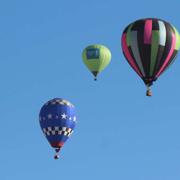Beyond Dawlish
Fog Formation and Its Effect on Visibility
Introduction
Fog is one of the most challenging weather conditions for pilots, significantly reducing visibility and affecting both takeoff and landing operations. Understanding how fog forms, its different types, and its impact on aviation is essential for every pilot undergoing DGCA ground training.
How Fog Forms
Fog forms when the air near the surface cools to its dew point, causing water vapor to condense into tiny water droplets. This process reduces visibility, sometimes to less than 100 meters, creating hazardous conditions for pilots. The key factors influencing fog formation include:
-
Temperature and humidity levels
-
Wind speed and direction
-
Geographical features like water bodies and mountains
Types of Fog in Aviation
There are several types of fog that pilots must be aware of:
-
Radiation Fog: Forms overnight when the ground cools, commonly seen in winter.
-
Advection Fog: Occurs when warm, moist air moves over a cooler surface, often found near coastlines.
-
Upslope Fog: Forms when air is pushed up a slope, cooling as it rises.
-
Steam Fog: Happens when cold air moves over warm water.
-
Ice Fog: Common in extremely cold regions, where fog consists of tiny ice crystals.
Aviation students studying meteorology at DGCA Ground Classes learn how to identify and predict these fog types to ensure safe flight operations.
Impact of Fog on Flight Operations
Fog can cause:
-
Reduced visibility: Making takeoff, landing, and taxiing difficult.
-
Delays and cancellations: Poor visibility often leads to flight disruptions.
-
Increased risk of runway incursions: Low visibility can lead to navigation errors on the ground.
Modern aircraft use Instrument Landing Systems (ILS) and Head-Up Displays (HUD) to assist pilots during low-visibility conditions. Mastering these systems is a crucial part of DGCA Ground Classes.
Fog Prediction and Prevention Techniques
-
METAR & TAF Reports: Pilots check aviation weather reports for fog warnings before flights.
-
Runway Lighting Systems: Airports use high-intensity lighting to improve visibility during foggy conditions.
-
Anti-Fogging Procedures: Aircraft are equipped with advanced windshield heating systems to prevent fog accumulation on cockpit windows.
Training in DGCA Ground Classes covers in-depth meteorological forecasting and operational strategies to handle fog-related challenges.
Final Thoughts
Fog is a significant aviation hazard that requires pilots to rely on meteorological knowledge and advanced landing technologies. Learning to navigate fog conditions is crucial for safe flight operations. With proper training from DGCA Ground Classes, pilots can confidently handle low-visibility situations and ensure passenger safety.




